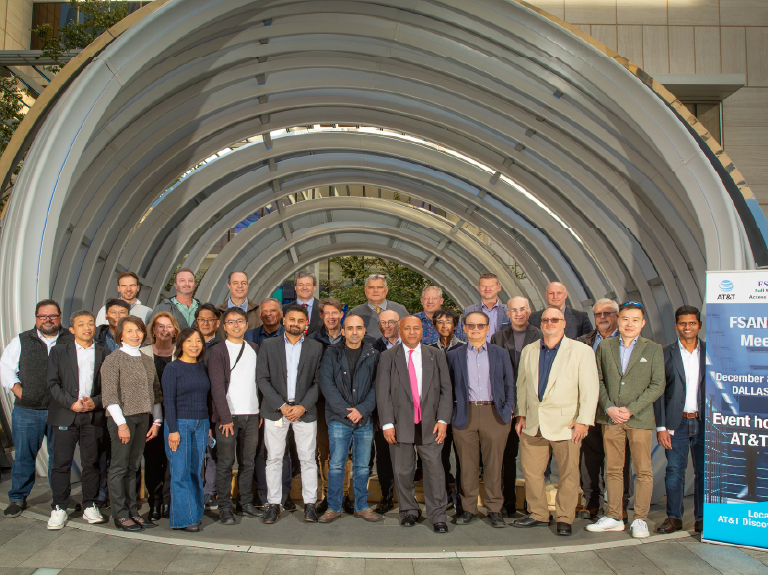Generative AI-powered Ask AT&T Tool Accelerating Coding and Software Development, and Coming Soon for Other Departments
It’s easy to take for granted the digital world we live in now, but about 40 years ago the arrival of the desktop computer was a sea change in how we create and interact with data. As information migrated from hard copies and mainframes to software and PCs, and then we networked those computers together to share information in an instant, new insights, industries and ways to work were born.
Additionally, while computers had been around for years before then, standard desktop PCs were accessible to everyone, not just engineers and programmers.
We’re on the cusp of the same shift with artificial intelligence. A seismic leap forward in terms of exposure and the impact in how we work.
AI isn’t new. In fact, AT&T has been in the AI business since the beginning.
What is new is that “generative AI” is making the technology open and applicable to everyone.
As I noted a few months ago, AT&T has built its own generative AI tool for our employees to use. We call it Ask AT&T. It’s an intuitive, conversational platform that you can interact with in plain English (or just about any other language). While our initial use case was for software developers to use it to write and refine code, we’re seeing opportunities across every part of our business.
So that initial internal launch back in June has expanded. Today, more than 30,000 AT&T employees have access to Ask AT&T. Our goal is for all of our management employees to receive access by the end of September.
Whether it’s in network engineering or finance, software development or supply chain, or any other part of our business, we’re pushing hard to put this tool in the hands of as many AT&T employees as possible. We know this will be a game changer because we’re already seeing it do amazing things. For example, we created a GenAI-powered vulnerability remediation tool. This tool can detect issues in our software code and, crucially, write and automate patches and fixes as they occur. While people are always in the loop to monitor and refine, we’ll be able to reduce our response times from days or weeks to literal seconds. Rather than chasing bugs and issues, our developers will be able to focus on creating new apps and services.
And we’re staying flexible as this nascent technology matures.
Ask AT&T was originally built on OpenAI’s ChatGPT functionality. But Ask AT&T is also interoperable with other Large Language Models (LLMs), including Meta’s LLaMA 2 and the open-source Falcon transformers. We’re working closely with NVIDIA to build and customize LLMs. Different LLMs are suited for different applications and have different cost structures, and we’re building that flexibility and efficiency in from the ground floor.
Ask AT&T is being used to write code, but a very exciting enhancement is to use Ask AT&T to talk to and analyze data. This functionality will query data – automatically detecting fields, joining tables and creating the code to help us gain insights from the vast data flows we manage on our network. As we say internally, human language is the new SQL or new Python. This is all opening up new opportunities to reimagine how we execute the business.
We’re training Ask AT&T with new data all the time. We’re training it on our contracts and financial materials, training it to assist with our human resources questions, to help make our customer service agents even more efficient so that they address customer questions better and faster and we’re training it to help identify and fight off fraud attempts.
In addition to our work with GenAI, we’re also advancing other AI initiatives. For example, back in March we announced a collaboration with NVIDIA on a range of AI capabilities. Those included much more frequent vehicle routing optimizations for our field technicians, using NVIDIA CuOpt as well as building digital avatars for employee support and training.
Since then, we have also applied their RAPIDS AI software for faster/more cost effective (in some cases 2x the speed, ½ the cost) Spark data pipelines, as well as scaled our AI models in production by deploying NVIDIA Triton Inference Server for real-time inferencing for use in traditional AI/ML, and Ask AT&T’s question and answer chats on AT&T content. We are also testing NVIDIA Riva for tying voice to text in front of several GenAI applications.
As AI and data science advance by leaps and bounds, we’re also ensuring that AT&T has a consistent target architecture across the board, with every part of the business accessing what we call “a single source of truth”. In other words, everyone is using the same platforms and tools and using the same databases and software code. Harmonization keeps all of AT&T on track to achieve our overall goals.
Lastly, ethics and data security are core to every decision we make. Protecting our customers and ourselves, while ensuring AI works fairly for everyone, is paramount.
AT&T has been a pioneer in AI for decades, and that’s still true today. As we move into this new era, putting these amazing tools in the hands of our employees will make them more creative, effective, and successful.
Read more Technology & Innovation news



